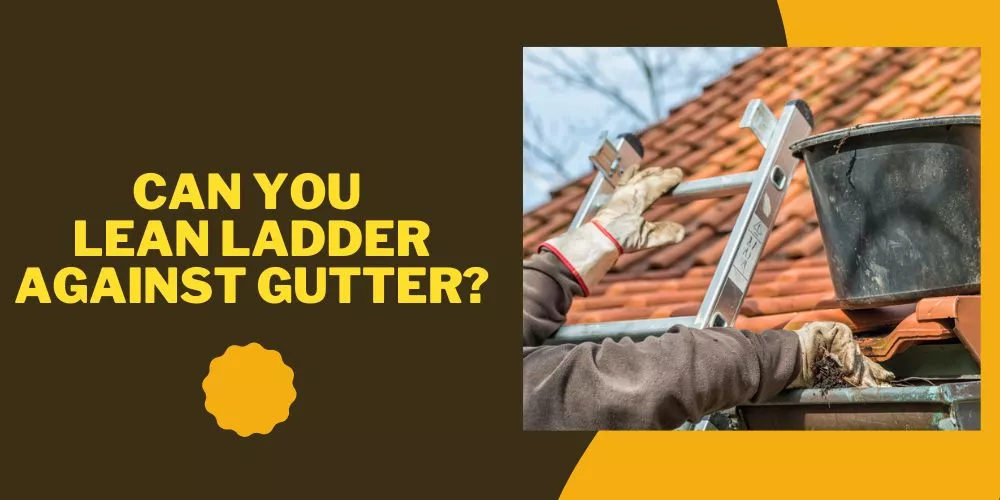Ladders are essential tools in various industries, construction sites, and homes. Safety is of utmost importance when it comes to working at heights, and the choice of ladder components plays a crucial role in ensuring stability and reliability.
One often wondered question is can rebar be used for ladder rungs? In this article, we will explore the feasibility, pros, cons, and safety considerations of using rebar for ladder rungs.
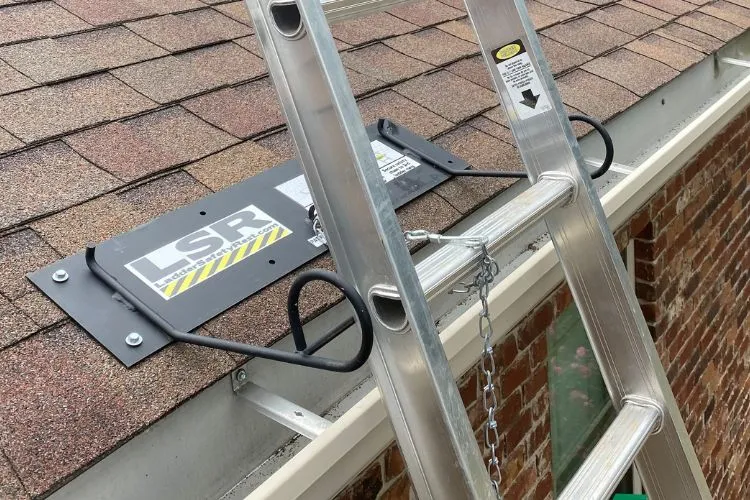
Can Rebar Be Used For Ladder Rungs?
To determine the feasibility of rebar as ladder rungs, it is essential to review current practices and opinions. In temporary applications, such as construction scaffolding, rebar has been successfully used as ladder rungs. However, for permanent installations like fixed ladders, expert opinions vary.
While some experts consider rebar acceptable for ladder rungs, there are safety risks and concerns to address. One crucial aspect is complying with regulations and standards, particularly those outlined by the Occupational Safety and Health Administration (OSHA). These regulations provide guidelines regarding the specifications and dimensions of ladder rungs.
Understanding Rebar and Its Characteristics
Before delving into the practicality of using rebar for ladder rungs, it is important to understand what rebar is and its characteristics.
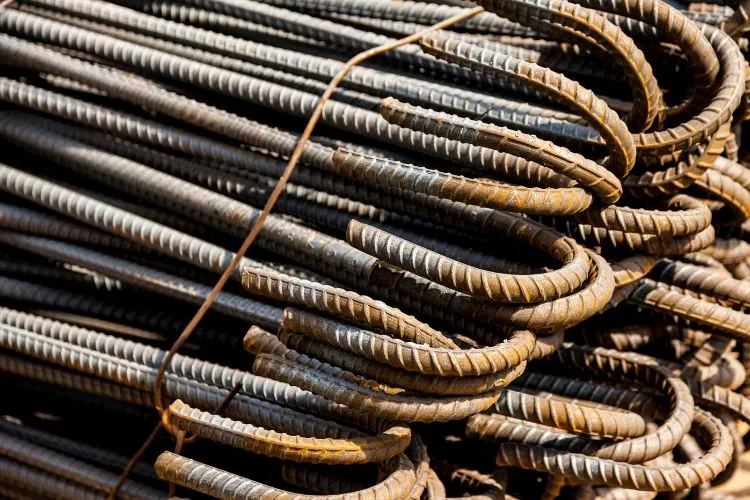

Rebar, short for reinforcing bar, is steel bar or mesh that is commonly used to provide strength and reinforcement to concrete structures. It is available in various types, including A706 weldable grades, which are suitable for welding.
Rebar offers excellent tensile strength properties and is known for its durability. However, its suitability for ladder rungs should be examined carefully, considering the specific load and safety requirements.
Pros and Cons of Using Rebar for Ladder Rungs
To weigh the pros and cons of using rebar for ladder rungs, let’s explore both sides of the argument.
Advantages of Rebar as Ladder Rungs
Rebar offers some advantages in terms of cost-effectiveness and availability. Compared to specialized ladder rung materials, rebar is relatively inexpensive and widely accessible in construction settings.
Additionally, rebar allows for customization, making it easy to create ladder rungs of desired lengths and shapes. Its installation process is straightforward, and welding rebar rungs to the ladder stiles lends a robust connection.
Drawbacks and Challenges
However, there are concerns regarding rebar’s suitability as ladder rungs. One significant drawback is corrosion. Rebar is susceptible to rust and deterioration over time, especially in environments with high moisture or exposure to corrosive elements.
Regular maintenance and preventative measures, such as protective coatings or galvanization, become essential to mitigate this issue.
In terms of user comfort and grip, rebar may not provide the same level of tactile support as alternative materials like wood or non-slip metals. This can compromise safety, especially when working in adverse weather conditions or with heavy loads.
Furthermore, long-term durability may be a concern as the constant stress and impact from usage may cause rebar rungs to weaken or deform over time.
Proper Installation Guidelines
When installing rebar rungs, it is important to use appropriate welding techniques and ensure the welders are certified and experienced.
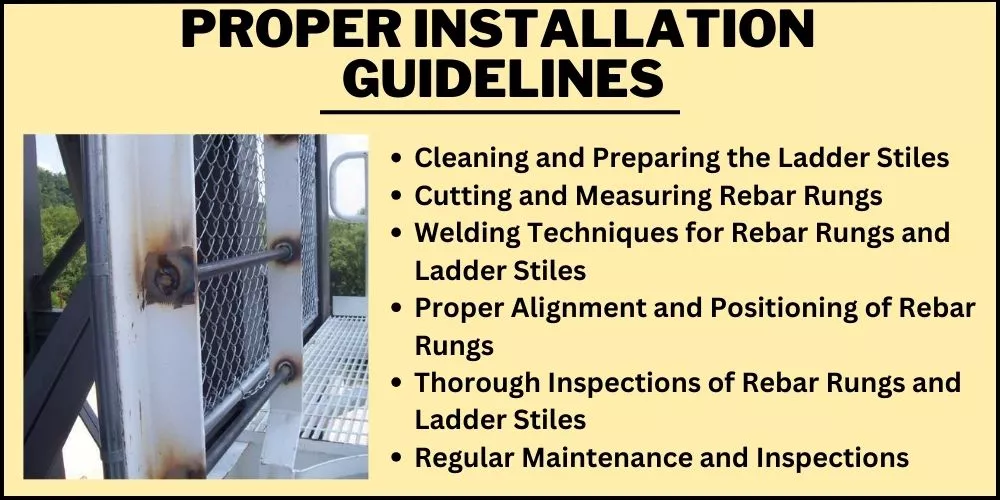

Adequate welding and attachment methods must be employed to secure the rungs to the ladder stiles. Consistent and thorough welding inspections are necessary to maintain the structural integrity of the ladder.
Cleaning and Preparing the Ladder Stiles
The first step in installing rebar rungs on a ladder is to clean and prepare the areas where the rungs will be attached. This includes removing any dirt, debris, or coatings that could interfere with the welding process and affect adhesion and bonding.
Cutting and Measuring Rebar Rungs
Rebar rungs should be cut to the desired length based on the specific spacing requirements outlined in safety regulations or guidelines. It is important to accurately measure and mark the locations where the rungs will be placed on the ladder stiles.
Welding Techniques for Rebar Rungs and Ladder Stiles
During the welding process, appropriate welding techniques should be followed to ensure strong and secure attachment of the rebar rungs to the ladder stiles. This typically involves using arc welding or MIG welding, along with suitable welding rods or wires that are compatible with the rebar and ladder stile materials.
Proper Alignment and Positioning of Rebar Rungs
Ensuring proper alignment and positioning of the rebar rungs on the ladder stiles is essential to avoid any movement or misalignment that could affect the strength and stability of the ladder. The use of clamps or fixtures to hold the rungs in place during welding is recommended.
Thorough Inspections of Rebar Rungs and Ladder Stiles
After the welding is completed, thorough inspections should be conducted to ensure that the quality of the welds and the overall integrity of the ladder. Inspections should include checking for any signs of incomplete welds, cracks, or defects that could compromise the strength and durability of the rebar rungs.
Regular Maintenance and Inspections
Consistent and regular inspections should be carried out throughout the lifespan of the ladder to identify any potential issues that may arise over time. Any necessary repairs or maintenance should be promptly addressed to ensure the ladder’s safety and reliability.
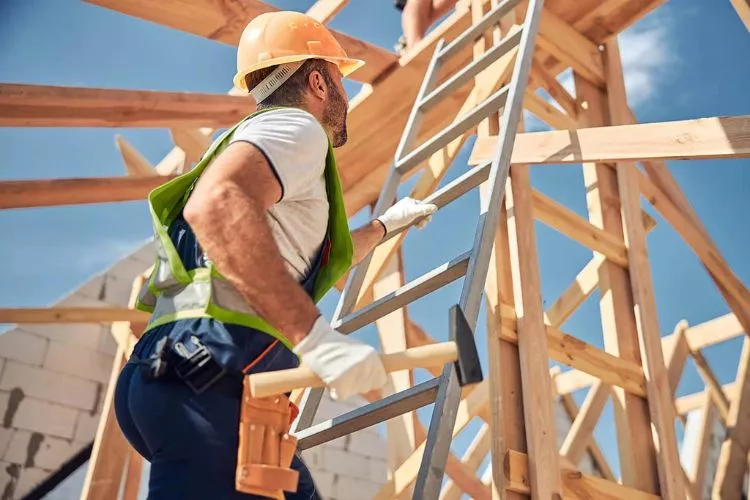

In summary, the proper installation of rebar rungs on a ladder requires cleaning and preparing the ladder stiles, accurately cutting and measuring rebar rungs, using appropriate welding techniques, ensuring proper alignment and positioning of the rungs and conducting thorough inspections throughout the ladder’s lifespan.
Following these guidelines, along with compliance to safety regulations and industry standards, is crucial to ensure a safe and reliable ladder.
you may also read: How Far Must Ladder Rungs Be Spaced?
Frequently Asked Questions (FAQs)
Can rebar be used for ladder rungs in permanent installations?
Rebar can be used for ladder rungs in permanent installations; however, strict adherence to safety regulations and standards is necessary to ensure structural integrity and user safety.
Are there any alternative materials recommended for ladder rungs?
Alternative materials for ladder rungs include wood, aluminum, and non-slip metals like galvanized steel or stainless steel. Each material has its own advantages and considerations; choosing the appropriate material depends on the specific requirements and industry guidelines.
What are the safety regulations for using rebar as ladder rungs?
OSHA provides safety regulations and guidelines for ladder rungs. These guidelines specify dimensional requirements, load-bearing capacities, and best practices for ladder construction and usage. Compliance with these regulations is crucial to ensure a safe working environment.
How often should rebar ladder rungs be inspected and maintained?
Rebar ladder rungs should be inspected regularly, at least annually, to identify any signs of damage, wear, or corrosion. Additionally, daily inspections before each use are recommended to ensure immediate visibility of any potential issues.
Conclusion:
The use of rebar for ladder rungs is a topic that sparks debate and considerations. While rebar can be a cost-effective and readily available option, it comes with several drawbacks and safety concerns.
Assessing the feasibility of using rebar as ladder rungs requires careful evaluation of regulations, safety precautions, and the specific requirements of the intended application.
To ensure user safety and comply with industry standards, it is advisable to consult experts, comply with safety regulations, and implement proper installation, inspection, and maintenance practices.


